Explore Mutare - Zimbabwe Travel, Africa
Mutare, a lovely city in Zimbabwe's eastern highlands, serves as a gateway to some of the country's most breathtaking natural beauties. Known for its lush landscapes and vibrant cultural heritage, Mutare offers a unique blend of history, adventure, and local flavor. As Zimbabwe’s fourth largest city, Mutare stands out with its welcoming atmosphere and diverse attractions. Whether you’re a history buff, nature enthusiast, or culture seeker, Mutare promises a memorable experience filled with discovery and delight.
Population: Approximately 225,000 in 2022.
Economy: Mutare's economy is diverse, driven by agriculture, manufacturing, and tourism. Key sectors include horticulture, mining, and local trade, contributing to the city’s vibrant economic landscape.
Landmarks: Famous for the Mutare Recreational Park, Dangamvura Mountain, and Vumba Mountains.
Zimbabwe
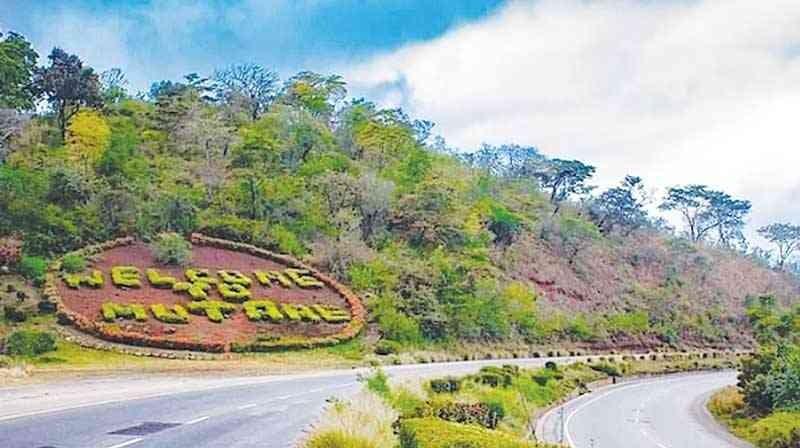
Overview of Mutare
History & Culture Influence
Mutare’s history is deeply intertwined with the rich tapestry of Zimbabwe’s past. Founded in the late 19th century, this city has evolved from a small colonial settlement into a bustling urban center. Its historical significance is marked by several key events, including the legacy of the British South Africa Company and the town’s role in Zimbabwe's independence movement. Culturally, Mutare is a cultural melting pot, with many different customs and influences. The city’s cultural heritage is reflected in its vibrant arts scene, traditional music, and local festivals. The city's particular cultural environment is influenced by several ethnic groups, most notably the Shona and Chewa.
Interaction with The Locals
The city's diverse population includes a mix of ethnic groups, with the Shona people being the predominant group. Mutare is known for its vibrant community and welcoming atmosphere, reflecting a blend of traditional Zimbabwean culture and modern urban life. The citizens are known for their friendliness and hospitality, making it a pleasant destination for visitors.
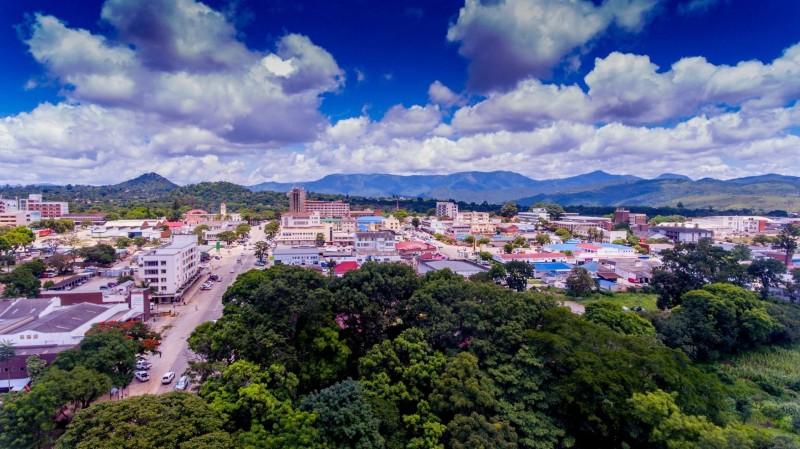
Mutare city, Zimbabwe - © Africa View Facts
Top Attractions in Mutare
Mutare Museum
Located in the heart of the city, the Mutare Museum offers a comprehensive look into the region’s history and culture. The museum features exhibits on prehistoric artifacts, colonial history, and the diverse cultural practices of the local Shona people. Notable displays include traditional beadwork, ceremonial artifacts, and an extensive collection of historical photographs.
Dangamvura Mountain
A natural gem of Mutare, Dangamvura Mountain is renowned for its stunning vistas and outdoor adventures. The mountain is a popular destination for hiking enthusiasts, offering trails that wind through lush forests and rocky outcrops. From the summit, visitors are rewarded with panoramic views of the surrounding highlands and the city below. The area is also ideal for birdwatching, with a variety of native species inhabiting the region. Whether you're looking for a challenging hike or a peaceful nature walk, Dangamvura Mountain provides a refreshing escape into nature.
Vumba Mountains
Just a short drive from Mutare, the Vumba Mountains are a must-visit for nature lovers. This mountain range is characterized by its mist-covered peaks, verdant forests, and rich biodiversity. Visitors can explore well-marked hiking trails that lead through scenic landscapes and past hidden waterfalls. The Vumba Botanical Gardens, located within the range, showcase a diverse collection of indigenous and exotic plant species. The area is also known for its pleasant climate, making it a year-round destination for outdoor activities and relaxation.
Mutare Recreational Park
A family-friendly destination, the Mutare Recreational Park provides a range of amenities for leisure and relaxation. The park features well-maintained picnic areas, children’s playgrounds, and sports facilities, including soccer and basketball courts. The lush green spaces are perfect for a relaxing afternoon outdoors, and the park often hosts community events and activities. Whether you’re looking to enjoy a picnic with family, engage in sports, or simply unwind amidst nature, the Mutare Recreational Park offers a variety of recreational options.
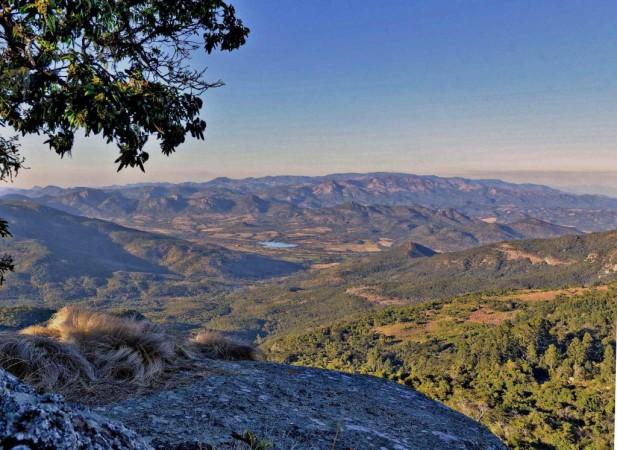
Vumba Mountains - © Handei Zimbabwe
Must-Try Dishes in Mutare
Exploring Mutare's local dishes is a crucial aspect of the adventure. The city's wonderful indigenous meals have a delectable variety of tastes and dishes that represent Zimbabwe's rich culinary heritage.
- Sadza: This staple meal, a thick maize porridge, is an essential component of Zimbabwean cuisine. Sadza is often served with stews, vegetables, or meats and is consumed everyday by locals.
- Nyama: Refers to grilled or braised meat, usually beef or goat, seasoned with spices. Nyama is often served with Sadza and vegetables, making it a popular choice for special occasions and gatherings.
- Vegetable Stews: Zimbabwean vegetable stews include ingredients like spinach, pumpkin leaves, and tomatoes. These hearty dishes are flavored with spices and can include beans or groundnuts for extra protein.
- Chibage: Corn-based Chibage is either roasted or boiled. It’s a versatile ingredient in various traditional dishes and snacks.
- Kapenta: Small dried fish that are usually fried and served with Sadza or as a crunchy snack. Kapenta is a tasty and protein-packed ingredient to many dishes.
- Mopane Worms: These edible caterpillars are a traditional delicacy in Zimbabwe. Mopane worms are usually dried or fried and are enjoyed as a crunchy, protein-packed snack or in stews.
- Gogobera: A savory dish made from groundnuts (peanuts) mixed with meat and vegetables, creating a rich and flavorful stew often enjoyed with Sadza.
- Maheu: A traditional fermented maize drink that is slightly sour and often enjoyed as a refreshing beverage with meals.
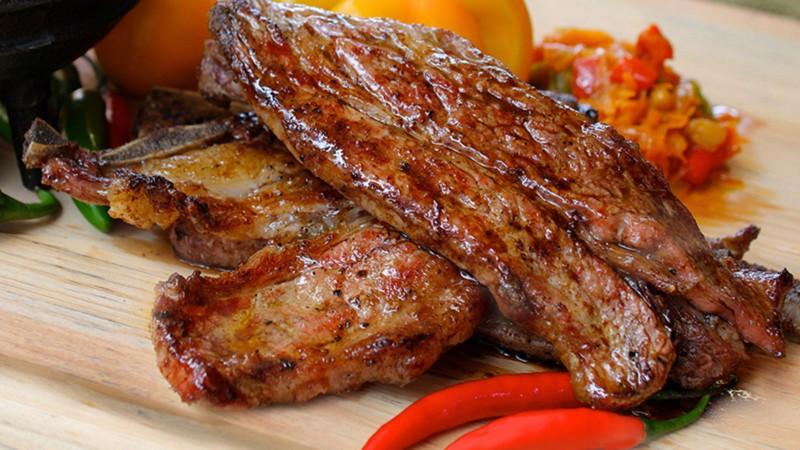
Nyama - © The Roving Foodie
Festivals & Local Celebrations
Mutare Festival
Held annually, the Mutare Festival is a major cultural event that celebrates the city’s artistic and cultural diversity. The festival includes a variety of performances such as music, dance, and theater. It also includes art exhibitions, craft markets, and food stalls offering local and international cuisines. The festival attracts both local residents and tourists, creating a lively atmosphere that highlights the best of Mutare’s creative talents.
Zimbabwe Independence Day
Celebrated on April 18th, Zimbabwe Independence Day marks the country’s liberation from colonial rule. In Mutare, the day is observed with patriotic events, including military parades, community gatherings, and concerts. The festivities are characterized by traditional music and dance, speeches by local dignitaries, and exhibitions showcasing Zimbabwe’s journey to independence. It’s a day of national pride and reflection, offering a deep connection to Zimbabwe’s history.
Gospel Music Festival
This annual event brings together gospel music enthusiasts from all across the region. The festival features performances by local and international gospel artists, and includes choir competitions, worship sessions, and inspirational talks. It’s a celebration of faith and music, offering a spiritually uplifting experience for attendees.
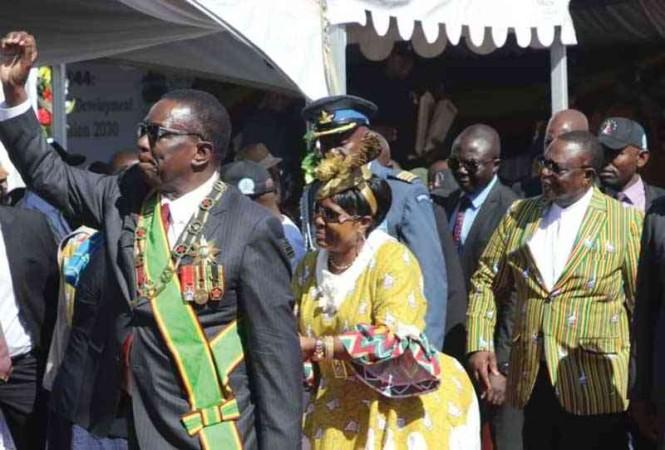
Zimbabwe Independence Day - © NewsDay Zimbabwe
What to Do in Mutare
- Outdoor Adventures: Discover the natural beauty of Mutare through activities like hiking, mountain biking, and birdwatching. The Vumba Mountains and Dangamvura Mountain provide scenic trails and panoramic views. For a more relaxed experience, enjoy a picnic in the lush surroundings of the Mutare Recreational Park.
- Cultural Tours: Immerse yourself in Mutare’s rich heritage by exploring historical sites such as the Mutare Museum. Participate in guided tours that offer insights into the city’s past, including its colonial history and local traditions. Visit local cultural centers to experience traditional arts and crafts.
- Local Craft Workshops: Participate in hands-on sessions where you will discover traditional Zimbabwean crafts. These seminars teach a variety of talents, including beading, ceramics, and wood carving. It's an excellent opportunity to produce one-of-a-kind mementos while also supporting local craftspeople.
- Mutare Safari Day Trips: Take advantage of Mutare’s proximity to several wildlife reserves. Plan a day trip to nearby game parks for a chance to see Zimbabwe’s diverse wildlife, including elephants, lions, and antelopes. Guided safari tours offer educational experiences about the region’s flora and fauna.
- Fishing and Boating: Enjoy recreational activities at nearby rivers and lakes. Fishing enthusiasts can spend a relaxing day casting their lines, while boating options provide a tranquil way to explore the scenic waterways.
Shopping in Mutare
- Mutare Main Market: A vibrant hub of activity, Mutare Main Market is the place to find fresh produce, traditional crafts, and local textiles. The market is a great spot to immerse yourself in the local atmosphere and pick up unique souvenirs, such as handmade jewelry and carved wooden items.
- Makorokoto Craft Village: This craft village showcases local artisans and their handmade products. From traditional beadwork and textiles to intricate carvings and pottery, Makorokoto Craft Village provides an authentic shopping experience and a chance to support local artists.
- Sangano Market: Known for its vibrant atmosphere, Sangano Market features a range of products including fresh fruits, vegetables, and local crafts. The market is an excellent place to explore Zimbabwean culture through its diverse array of goods.
- The Bead Shop: Specializing in beautiful, handcrafted beadwork, The Bead Shop offers a range of colorful and intricate jewelry pieces. It’s a great place to purchase unique accessories and learn about the traditional techniques used in Zimbabwean beadwork.
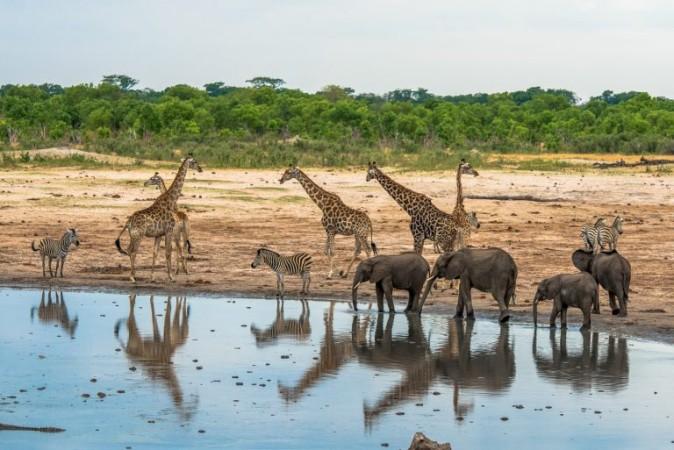
Mutare Safari Trips - © Zimbabwe Tourism
Weather in Mutare: Best Time to Visit
Spring in Mutare
- Weather: Spring sees temperatures rising again, from 15°C to 25°C (59°F to 77°F), with increasing warmth and occasional showers as the season progresses.
- Tourism Trend: Spring is a transitional season with mild temperatures and blooming landscapes. It’s a great time for exploring nature trails, attending local festivals, and enjoying the rejuvenated scenery. The warming weather makes it ideal for both outdoor and cultural activities.
Summer in Mutare
- Weather: This season brings warm temperatures ranging from 20°C to 28°C (68°F to 82°F), with high humidity and occasional thunderstorms. The lush green landscapes and vibrant flora make this a visually appealing time of year.
- Tourism Trend: Summer is a popular time for outdoor activities such as hiking and exploring Mutare’s natural beauty. The wet season enhances the scenery, making it ideal for visiting gardens and parks. However, it’s advisable to plan for potential rain showers and humidity.
Autumn in Mutare
- Weather: Temperatures start to cool, ranging from 15°C to 25°C (59°F to 77°F), with drier conditions and less humidity. The landscape begins to shift as the rainy season tapers off.
- Tourism Trend: Autumn is excellent for sightseeing and outdoor adventures without the intense heat of summer. The cooler temperatures are perfect for exploring cultural sites, markets, and enjoying outdoor festivals. This is also a good time for birdwatching as migratory birds start to appear.
Winter in Mutare
- Weather: Winters are mild with temperatures ranging from 8°C to 22°C (46°F to 72°F). The air is dry, and the skies are generally clear, offering great visibility.
- Tourism Trend: Winter is a peak season for tourism due to the pleasant weather. It’s ideal for engaging in outdoor activities like hiking, visiting nearby wildlife reserves, and exploring Mutare’s attractions. The cooler weather also makes it a comfortable time for city tours and cultural events.
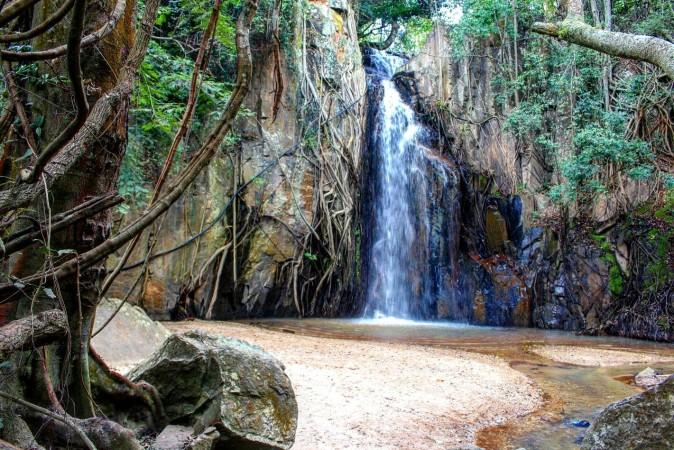
Discover Mutare's natural beauty - © Zim Locals
Essential Travel Information
Getting Around Mutare
- Taxis and Ride-Sharing: Taxis are widely available in Mutare and can be hailed on the street or booked through local taxi services. Ride-sharing apps like Uber may also be available, offering a convenient and often more affordable alternative.
- Public Buses: Local buses provide an economical way to travel within Mutare and to nearby towns. The bus network is extensive, although schedules and routes may vary, so it's best to check in advance.
- Private Cars: Renting a car is a great option for exploring Mutare and its surroundings at your own pace. Several car rental agencies operate in the city, offering a range of vehicles for different needs.
- Bicycles: For a more eco-friendly mode of transport, consider renting a bicycle. Cycling around Mutare allows you to enjoy the city's scenic areas and get a closer look at local life.
ATM & Banking Services
In Mutare, accessing financial services is straightforward with numerous ATMs available throughout the city, offering convenient cash withdrawals and accepting international credit and debit cards. For more comprehensive banking needs, several banks provide a range of services including currency exchange, deposits, and withdrawals. ATMs and bank branches are typically located in central areas, shopping centers, and tourist spots. It’s also advisable to exchange some money before arriving.
Where to Stay in Mutare
- Luxury Hotels: For those seeking a high-end experience, luxury hotels in Mutare provide upscale amenities such as swimming pools, fine dining, and spa services. These establishments offer a premium stay with exceptional service and comfort.
- Mid-Range Hotels: Mid-range accommodations offer a balance of comfort and affordability. These hotels typically feature well-appointed rooms, reliable amenities, and often include options for dining and leisure activities at a more moderate price point.
- Guesthouses: For a more intimate and personalized stay, guesthouses and bed-and-breakfasts in Mutare offer cozy accommodations with local charm. These places frequently offer a warm, inviting ambiance and customized service.
Des articles pour vous

Voyage à Kampong Cham - Cambodge, Asie
Kampong Cham est une charmante ville riveraine située le long du fleuve Mékong. Connue pour son importance historique et ses attractions culturelles, Kampong Cham offre un mélange d'architecture coloniale, de temples anciens et de paysages pittoresques. Kampong Cham est reliée au district voisin de Tbong Khmum par le pont Kizuna, le premier pont au Cambodge à traverser le fleuve Mékong, en faisant un carrefour de transport crucial pour la région.
Population : Estimation de 80 000 habitants (en 2024)
Économie : Bien que n'étant pas encore une destination touristique majeure, Kampong Cham propose des sites culturels et historiques, tels que le temple Wat Nokor et le pont en bambou de Koh Pen, ainsi que des attractions naturelles comme des forêts et des chutes d'eau. Le gouvernement se concentre sur le développement du tourisme pour améliorer l'économie locale.
Points d'intérêt : Wat Nokor Bachey, Phnom Han Chey, Phnom Pros et Phnom Srey, pont en bambou de Koh Pen, Wat Joy T'maw, Preah Theat Teuk Chha, piste d'atterrissage abandonnée de l'US.

Explorez Nha Trang - Voyage au centre du Vietnam, Asie
Nichée le long de la magnifique côte du Vietnam, Nha Trang se distingue comme une destination de premier choix pour les voyageurs. Cette ville côtière, réputée pour ses superbes plages et sa vie marine foisonnante, s'adresse à tous. Nha Trang vous accueille à bras ouverts, que vous recherchiez des aventures, de la culture ou de la détente au bord de la mer. Ce guide vous fera découvrir les points forts de cet endroit magnifique, facilitant ainsi la planification de votre voyage de manière fluide et excitante.
Population : Environ 423 000 habitants en 2019.
Économie : L'un des principaux centres touristiques du Vietnam et la plus grande économie de la province de Khanh Hoa.
Sites emblématiques : Célèbre pour les tours Cham de Po Nagar, la cathédrale de Nha Trang et l'île Hon Mun.

Voyage à Sihanoukville - Cambodge, Asie
Sihanoukville, une ville côtière du sud-ouest du Cambodge, est la capitale de la province de Preah Sihanouk. Située sur une péninsule le long du golfe de Thaïlande, la ville est bien reliée à Phnom Penh par des autoroutes principales et dispose d'un aéroport international.
La ville abrite le seul port en eau profonde du Cambodge, jouant un rôle crucial dans la logistique et le commerce du pays. Les plages magnifiques de Sihanoukville, telles qu'Ochheuteal et Serendipity, attirent aussi bien les touristes nationaux qu'internationaux. Le développement économique a prospéré ces dernières années, en particulier grâce à la création de la Zone économique spéciale de Sihanoukville (SSEZ) et aux investissements chinois dans les casinos, l'immobilier et les stations balnéaires. La ville offre également des attractions naturelles telles que le parc national de Ream et plusieurs îles voisines, en faisant une destination variée pour les voyageurs d'affaires et de loisirs.
Population : La population de Sihanoukville était d'environ 160 000 habitants en 2024.
Économie : Sihanoukville, une ville côtière en pleine croissance au Cambodge, se distingue par son mélange dynamique de développement économique et de tourisme. La Zone économique spéciale de Sihanoukville (SSEZ) est devenue un pôle industriel majeur, abritant plus de 180 entreprises et créant des milliers d'emplois. Avec le seul port en eau profonde du Cambodge, la ville joue un rôle clé dans le commerce et la logistique du pays. Bien qu'elle se soit transformée d'une petite ville balnéaire tranquille en un centre urbain animé, Sihanoukville reste célèbre pour ses plages immaculées, attirant des touristes tout au long de l'année. Les investissements chinois importants ont alimenté la croissance des hôtels, des casinos et de l'immobilier, faisant de la ville un centre d'opportunités économiques et d'hospitalité.
Monuments : Plage d'Otres, Plage d'Ochheuteal, Plage de l'Indépendance, Parc national de Ream, Chute d'eau de Kbal Chhay, Monument des Lions d'Or, Wat Leu.

Explorez Kharkhorin - Voyage en Mongolie, Asie
Bienvenue à Kharkhorin, un trésor historique niché au cœur de la Mongolie. Ancienne capitale vibrante de l'Empire Mongol sous le légendaire Gengis Khan, Kharkhorin se dresse comme un témoignage de la riche culture et de l'histoire de la Mongolie. Cette ville antique possède une combinaison unique d'importance historique et de paysages époustouflants, en faisant une destination incontournable pour un voyage de rêve en Mongolie. En mettant le pied à Kharkhorin, vous ferez un saut dans le temps, à une époque de grands palais, de routes commerciales prospères et d'échanges culturels sans pareils. Que vous soyez intrigué par les ruines anciennes, désireux d'explorer les traditions locales ou simplement en quête d'une immersion dans la beauté naturelle de la Mongolie, Kharkhorin a quelque chose à offrir à chacun.
Population : Environ 1 000 habitants en 2020.
Économie : L'une des attractions touristiques les plus importantes de la Mongolie et l'ancienne capitale de l'Empire Mongol.
Monuments : Célèbre pour les Ruines de Kharkhorin, le Monastère d'Erdene Zuu, et la Vallée d'Orkhon, un site du patrimoine mondial de l'UNESCO.

Explore Luang Prabang - Laos Travel, Asia
Luang Prabang, nestled in northern Laos at the meeting point of the Mekong river and Nam Khan river, is a city celebrated for its rich cultural heritage and stunning natural beauty. Recognized as a UNESCO World Heritage Site in 1995, it boasts a unique blend of traditional Lao and French architecture that has been carefully preserved. Whether you're wandering through its ancient temples, admiring the local architecture, or soaking in the natural beauty of waterfalls and rivers, Luang Prabang offers something for everyone.
Population: Approximately 470,000 in 2020.
Economy: Luang Prabang's economy thrives on tourism, with its UNESCO status drawing visitors to its temples, natural wonders, and cultural experiences. Local crafts, hospitality, and small businesses also play vital roles, supporting the town's sustainable growth. Local crafts, hospitality, and small businesses also play vital roles, supporting the town's sustainable growth.
Landmarks: Famous for the Wat Xieng Thong, Royal Palace Museum (also known as Haw Kham), and Mount Phousi (Phou Si Hill).Luang Prabang, nestled in northern Laos at the meeting point of the Mekong river and Nam Khan river, is a city celebrated for its rich cultural heritage and stunning natural beauty. Recognized as a UNESCO World Heritage Site in 1995, it boasts a unique blend of traditional Lao and French architecture that has been carefully preserved. Whether you're wandering through its ancient temples, admiring the local architecture, or soaking in the natural beauty of waterfalls and rivers, Luang Prabang offers something for everyone.
Population: Approximately 470,000 in 2020.
Economy: Luang Prabang's economy thrives on tourism, with its UNESCO status drawing visitors to its temples, natural wonders, and cultural experiences. Local crafts, hospitality, and small businesses also play vital roles, supporting the town's sustainable growth. Local crafts, hospitality, and small businesses also play vital roles, supporting the town's sustainable growth.
Landmarks: Famous for the Wat Xieng Thong, Royal Palace Museum (also known as Haw Kham), and Mount Phousi (Phou Si Hill).

Explore Vientiane - Laos Travel, Asia
Vientiane, the capital of Laos, offers a unique travel experience for those looking to explore a peaceful Southeast Asian city with a deep connection to its cultural roots. Unlike other bustling capitals, Vientiane boasts a serene and laid-back atmosphere, making it a perfect destination for travelers wanting to escape the chaos of more crowded cities. This charming city sits along the Mekong River, offering scenic views, rich history, and a vibrant yet tranquil way of life. As a gateway to exploring Laos, this capital invites you to slow down, immerse in its heritage, and enjoy the local flavors.
Population: Approximately 840,000 in 2023.
Economy: Vientiane's economy is growing steadily, driven by government services, trade, and tourism. Key sectors include agriculture, manufacturing, and construction. The city's strategic location along the Mekong River supports trade with neighboring Thailand and Vietnam.
Landmarks: Famous for the Pha That Luang, Patuxai, and the Buddha Park (or Wat Xieng Khuan).
